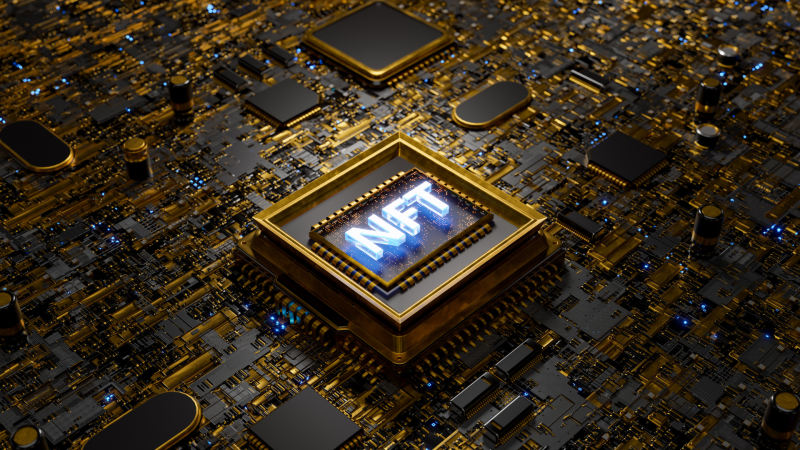Ultimate Guide To NFTs: How to build an NFT Ecosystem?

Categories :
Ultimate Guide To NFTs: How to build an NFT Ecosystem?
NFTs are the key that brings offline world assets to the online, open, and decentralised digital world, fuelling the rise of new digital immersive ecosystems.
This is an extract of the upcoming 'Metaverse NFTs Uprising Ultimate Guide to NFTs' By Dinis Guarda.
NFTs are the future. Just recently, the famous whistleblower Edward Snowden used the technology to auction a piece called “Stay Free”:
“We’re very excited to use the proceeds of this auction to help further our work developing and improving technology that can protect journalists and their sources, like SecureDrop, our open-source whistleblower submission system”.
Ownership and trade are vital aspects of prevalent human culture. However, human concepts of, and our need for, ownership extend far beyond the practical necessities of food, land, resources, and energy. Throughout history, our most prized possessions have often been things with no direct useful or economic purpose. We have created and destroyed, fought over, won, and lost, items of emotional and cultural currency such as religious icons, jewellery, and art that represent the less tangible of our being. Things that manifest the unmanifest codify our ideas and encapsulate our humanity.
Since our earliest history, we have found ways to control the exchange of physical value. More recently, we have also devised and defended systems, such as trademarks and patents, that ascribe ownership and prevent the unauthorised use of intellectual property, intangible assets such as ideas, patterns, designs, and processes, which may have economic and cultural value.
These assets will become increasingly digital as we digitise our lives and culture in what is being called the Metaverse.
Since the advent of the Internet, we have increasingly codified the intangible aspects of our culture electronically in digital media, relying less and less on real-world physical objects. Adoption cryptocurrency is a critical stage in this transition, enabling an exchange of value. NFTs provide the next step, enabling a unique description of a discrete entity.
NFTs - the definition
A non-fungible token is a unique and non-interchangeable unit of data stored on a digital ledger (Blockchain). Although NFTs use the same blockchain technology as cryptocurrencies, what distinguishes them is their lack of interchangeability (fungibility). Each NFT has a unique blockchain address. This characteristic enables NFTs to act as a digital twin for any unique digital or physical asset to provide public proof of ownership.
The world economy has been evolving toward increased digitisation, creating digital twins of everything around us. A digital twin is simply a digital representation, a unique identity, of whatever exists. However, we did not have a way to certify and monetise our digital world as we did with paper technology until recently.
NFTs provide an essential building block for the creation of the Metaverse. They offer a ubiquitous means to securely share ownership, access, and use of a unique set of data. As such, NFTs are then a key enabler of digital transformation and a much-needed invention, enabling us, for the first time, to certify an ever-expanding digital ecosystem on which we are increasingly dependent.
The breadth of NFTs is just beginning to be shown and more developments are taking place as we write this book. The market for NFTs is also expanding. It surged to new highs in the second quarter of 2021, with $2.5 billion in sales so far this year (the NFT wave became serious in 2020), up from just $13.7 million in the first half of 2020, according to marketplace data. Moreover, as Visa bought a $150k NFT, Opensea surpassed $1bn in turnover for August 2021 alone.
NFT uses - examples
• Automotive, Aerospace and Maritime Industries – Virtual Planes, Trains and Automobiles
As with land and buildings, virtual cars, planes, and boats have also been created and tokenised as NFTs.
CryptoMotors, are a professional car design studio based in Germany dedicated to creating de-centralised digital vehicles using the Ethereum blockchain. Every car they make is unique and 100% owned by the token owner. It cannot be destroyed, replicated, or taken away.
The idea of a custom-made car usable in virtual worlds is an enticing one, and together with F1 Delta Time and Battle Racers, Cryptomotors have sold hundreds of ETH worth of digital cars.
It is not just cars that have become popular. CryptoYachts are one of several companies that also produce virtual boats, an item with an elite appeal.
In December 2021, a digital mega-yacht sold for 149 ether (about $650,000), making it the most expensive NFT sold in Sandbox’s virtual world. The ‘Metaflower Super Mega Yacht comes with two helipads, a dancefloor, hot tubs, and a DJ booth among the three-story boat's amenities.
• Collectables
Cryptokitties, CryptoPunks, Blockchain Cuties, and Avastars are all examples of tradable NFT collectables.
Some CryptoPunks have sold for more than $1 million.
The concept of ownership and the desire to have something iconic seem alive and well.
Exclusive ownership is a concept that appeals to human nature and applies across many sectors, such as fashion, luxury goods, which will be explored further in subsequent chapters.
• Sports
One very recognisable area where NFTs have been adopted is the sports sector, specifically in connection with sports collectables, which can be either physical or virtual.
Digital media vastly expands the possibilities for owning sports content and memorabilia, enabling ownership of unique stills, video, and audio content, such as scoring a goal, with additional content such as commentary provided by the player/s involved.
Sports organisations such as NBA have been quick to replicate other implementations of virtual collectables.
A prime example is NBA Top Shot NFTs which offer basketball fans the opportunity to buy and sell NFT collectables of moments in the NBA league’s history. Developed in collaboration between the NBA players and several notable entrepreneurs, these have been hugely popular and achieved over $100 million in sales volume.
These NBA NFTs are not just collectables; they have a utility value in being usable in multiple games. A whole ecosystem of sports games is being built around these NFTs.
Conclusion
We have seen that already many industry sectors have found valuable ways to use blockchain, cryptocurrency, tokens and NFTs.
NFTs have been adopted in multiple industries, and their use is now widespread and popular. With so many use cases, without doubt, NFTs disrupt and revolutionise most, if not all sectors, not just the creative industries, or even just business; they have the potential for application in all areas of the economy and society at large.
It is not just about doing the same things differently, NFTs enable new and hitherto unimagined transactions. The future is exciting.

Dinis Guarda is the founder and chief vision architect for citiesabc.com and CEOCreatorAuthor of freedomxcom. He has before created the platforms openbusinesscouncil.org, fashionabc.org, intelligenthq.com, hedgethink.com, tradersdna.com and and IP technologies blocksdna.com, lifesdna.com, iDNA and indexDNA.
With 20+ years experience in international business and digital transformation Dinis Guarda has been a Lecturer and guest Speaker in international business schools such as: Cambridge, Kings College, Copenhagen Business School, INSEEC, Monaco University among others. Dinis is the author of various books. His upcoming book, titled 4IR Magna Carta Cities ABC: A tech AI blockchain 4IR Smart Cities Data Research Charter of Liberties for our humanity is due to be published in 2020. Before that, he has published “4IR AI Blockchain Fintech IoT Reinventing a Nation“, “How Businesses and Governments can Prosper with Fintech, Blockchain and AI?”, also “Blockchain, AI and Crypto Economics – The Next Tsunami?” among others. He was responsbile for over 20 books/ebooks/magazines published in various languages.
Dinis is a serial entrepreneur and CEO / chairman of the companies ztudium / techabc / open business platform. Dinis is involved as a strategist, board member and advisor with the payments, lifestyle, blockchain reward community app Glance technologies, for whom he built the blockchain messaging / payment / loyalty software Blockimpact, the seminal Hyperloop Transportations project, Kora, and blockchain cybersecurity Privus.
He is listed in various global fintech, blockchain, AI, social media industry top lists as an influencer in position top 10/20 within 100 rankings: such as Top People In Blockchain | Cointelegraph and https://cryptoweekly.co/100/ .
Between 2014 and 2015 he was involved in creating a fabbanking.com a digital bank between Asia and Africa as Chief Commercial Officer and Marketing Officer responsible for all legal, tech and business development. Between 2009 and 2010 he was the founder of one of the world first fintech, social trading platforms tradingfloor.com for Saxo Bank. More about him here https://www.openbusinesscouncil.org/wiki/dinis-guarda/









